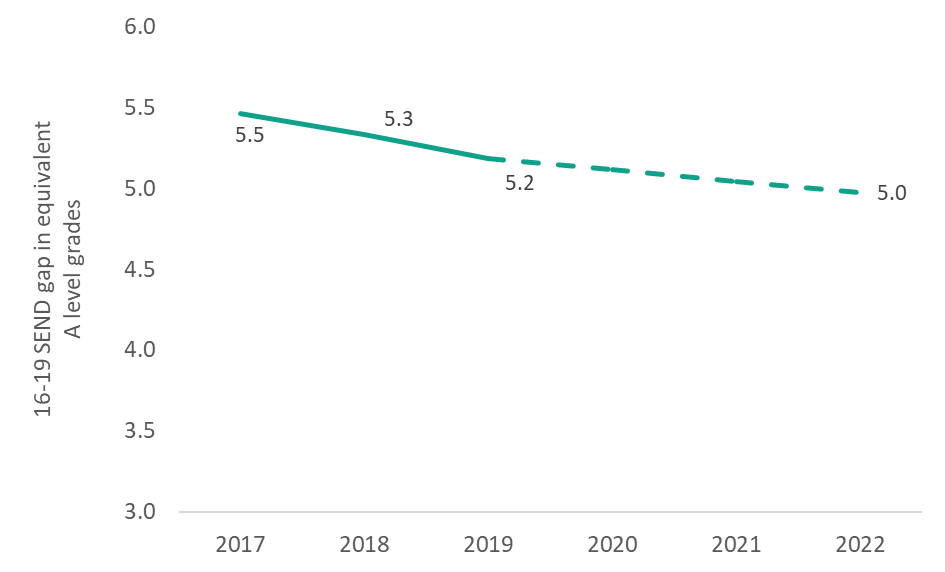Special Educational Needs and Disability
Students with special educational needs and disability (SEND) are amongst the most educationally disadvantaged, this is a trend we see throughout all prior educational phases, and it persists into 16-19 education also.
Data identifying students with SEND is less complete in the 16-19 phase, so we measure SEND status as recorded in the spring census in the final year of key stage 4.
Figure S1: The gap in grades between students with identified SEND and their peers has been closing

Figure S1 demonstrates that the 16-19 attainment gap between students with an identified special educational need or disability and their peers has narrowed since 2019, as seen for students at the end of key stage 4. In 2022, this gap was 5.0 grades compared to 5.2 in 2019. However, this narrowing of the gap appears to predate the pandemic, as it had been narrowing since 2017.
Despite these encouraging signs, it remains the case that these students are amongst the most educationally disadvantaged, with the gap standing at around 5 grades in 2022 (compared to the 16-19 disadvantage gap which was 3.5 grades in 2022).
